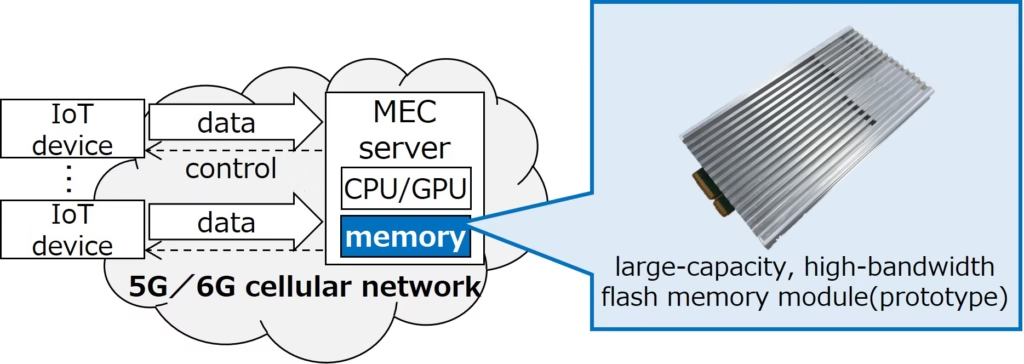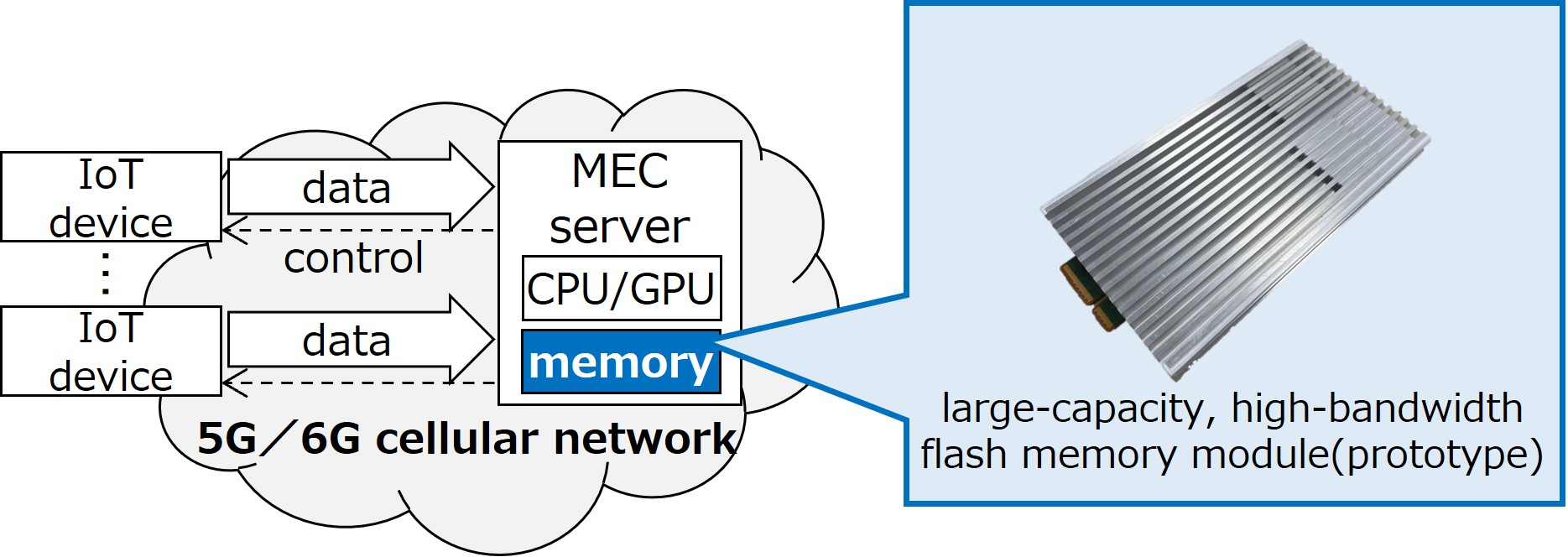
Kioxia has developed a prototype memory module that delivers both size and speed. The flash-based design offers an insane 5TB of capacity and 64GB/s of bandwidth, overcoming the trade-off that has limited conventional DRAM modules.
The work was carried out under Japan’s Post-5G Information and Communication Systems Infrastructure Enhancement R&D Project, commissioned by NEDO. The goal is to create hardware ready for a world of faster networks, lower latency, and heavier data demands.
Instead of a bus connection, Kioxia used a daisy-chain layout that links flash memories through controller “beads.” This approach prevents bandwidth from collapsing as capacity scales upward. On top of that, a 128Gbps PAM4 transceiver enables high throughput while keeping power requirements down.
The company also addressed latency. A flash prefetch system reduces delays by pulling data in advance during sequential reads. Combined with low-amplitude signaling and distortion correction, the flash-to-controller interface reaches 4.0Gbps.
The prototype uses PCIe 6.0 as its host interface and has already been tested. It hit the promised 5TB capacity and 64GB/s bandwidth while drawing less than 40 watts of power. That makes it efficient enough to consider for real-world server deployments.
Kioxia expects the technology to play a role in Mobile Edge Computing servers. As 5G and 6G connect more devices, latency from relying on distant cloud servers becomes a problem. By pushing powerful memory closer to users, industries can support real-time workloads in AI, IoT, and big data analysis.
The company also sees opportunities in generative AI, where memory bandwidth is often a bottleneck. It plans to move toward commercialization, bringing this prototype closer to practical use.


